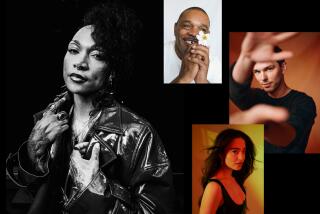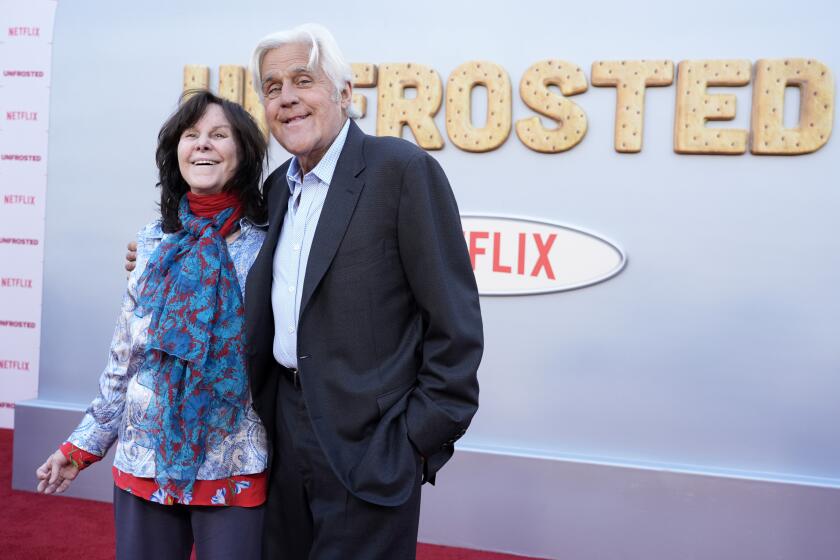The Currency of Cultural Exchange
- Share via
As local art lovers know, “Van Gogh’s Van Goghs” was the event of the year at the Los Angeles County Museum of Art--at least in terms of numbers.
The exhibition of 70 paintings from the Van Gogh Museum in Amsterdam packed in 821,000 visitors during its 17-week run in the spring, boosted the museum’s membership from 64,000 to 118,000 and is said to have netted the museum a whopping $7 million. The phenomenally successful show also pumped an estimated $122 million into the local economy and generated 3,000 jobs.
But along with that tidal wave of popularity, “Van Gogh’s Van Goghs” also has had a ripple effect in the international art community. One surprising--if rather circuitous--result is that a thoroughly American, Los Angeles-based art show will be launched at the Dutch museum that sent its treasures to Los Angeles. “Photographing American Dreams, 1840-1940,” a traveling exhibition of about 200 images organized by Los Angeles photography collector-dealer Stephen White with Andreas Bluhm, head of exhibitions at the Van Gogh Museum, will make its debut at the Amsterdam institution in the fall of 2001.
“This was wonderful serendipity,” White said of the coincidence that gave his long-planned project an unexpected Dutch connection. While the L.A. blockbuster didn’t create the alliance, it offered a timely opportunity for a partnership to develop.
A veteran photography dealer, White operated a gallery in Los Angeles from 1975 to 1990, when he sold a large collection of photographs to the Tokyo Fuji Museum in Japan. But he has continued to buy and sell photographs privately, out of his home in West Los Angeles. And, as an inveterate collector, he has amassed an eclectic array of pictures.
“I think of myself as a cultural historian,” said White, who appreciates photography’s aesthetic qualities but is particularly fascinated with how photographic images reflect and affect various aspects of society. While acquiring pictures of American industry, transportation, aviation and advertising over the past decade and considering their implications, he began to view many of them in terms of another theme.
“The images seemed to tell the story of American dreams and the role of photography in expressing those dreams,” he said. Soon he began thinking about an exhibition that would express that idea over a significant period of history.
A frequent traveler and schmoozer-to-the-trade, White mentioned his project in a casual conversation with a curator of the Van Gogh Museum a couple of years ago. When Bluhm got wind of the show a bit later, he had more than a passing interest in it because he was developing a program of temporary exhibitions for the museum’s new wing. The three-story addition, designed by Japanese architect Kisho Kurokawa, opened in June.
The museum’s original building remained open during the first phase of the new wing’s construction, but it was closed for renovation during the final nine months. Instead of putting all of the Dutch master’s works in storage during that period, museum officials decided to send a large group of paintings to the United States in “Van Gogh’s Van Goghs.”
When Bluhm came to Los Angeles for the opening of the show, he also paid a visit to White. They agreed to collaborate on a traveling exhibition that would begin in Amsterdam. The itinerary is still in planning stages, White said, but he expects to schedule several stops in Europe and Asia and to end the tour at a yet-to-be-designated venue in Los Angeles.
“Photographing American Dreams” might seem to be an odd exhibition for an immensely popular Dutch museum devoted to the work of Vincent van Gogh, but Bluhm cited several reasons for his interest in White’s collection and concept. “The Van Gogh Museum’s exhibition program covers the period of roughly 1830 to 1920 because we want to place the great master in the context of the 19th century,” he said. “Exhibitions do not necessarily need to have a direct link to Van Gogh. Quite the opposite; while he attracts large, international crowds, he also allows us to look into aspects of the period that undeservedly get less attention.”
The exhibition will portray a century of American and photographic history, when the struggle for national identity and the pursuit of dreams often caused conflict and suffering, White said. Although many images are celebratory, romantic or hopeful, others show that “the building of the country and fulfilling its dreams was not a smooth transition but a painful and complex one, often built on the backs of immigrants and the disenfranchised,” he said.
*
Divided into six segments, the show will focus on the changing face of American identity, both at work and at play; the struggle for freedom and human rights; national icons, including natural wonders and hallowed leaders; industry and trade; forms of transportation that facilitated the country’s growth; and cities, which became identified with American ideals and accomplishments.
Some images commemorate historic occasions, such as “Joining of the Rails at Promontory Point,” shot in Utah in 1869; the inauguration of President Grover Cleveland in 1885; and Alexander Graham Bell’s first long-distance telephone call, from New York to Chicago, in 1892. Others portray ordinary people going about their business while living their version of the American Dream.
“There’s a smattering of big names,” White said, pointing out Paul Outerbridge’s “Evolution of the Motorcar,” created around 1920 as an advertisement for the Marmion automobile, and Margaret Bourke-White’s dramatically composed “Worker at Steinway Piano Factory,” shot in 1934, among other works by well-known artists. But he has also selected images by commercial groups and anonymous photographers.
*
The top of the Woolworth Building pokes through a field of fluffy clouds in a dreamy picture credited to Fairchild Aerial Photographs, circa 1930. One of the most poignant images is an anonymous picture of the first baby born at the Boston immigration office, circa 1900. Named George B. Billings Rego, in honor of Boston’s commissioner of immigration, the infant is posed on a pedestal draped with an American flag.
Images such as these and, indeed, photography as a whole are “an essential part of the visual culture of the 19th century,” Bluhm said. “That sounds obvious, but it still needs to be said time and again. The fact that the Van Gogh Museum mounts photography shows is a sign that we, a museum of undisputed ‘high art,’ take that medium seriously.”
Furthermore, he said, “We would like to abandon the distinction between art appreciation and cultural history. For me, at least, they are one and the same thing.”
The exhibition will also serve as “an introduction to the art and history of America,” Bluhm said. Although many of his professional colleagues are very well versed in the subject, the Dutch public “still perceives the New World in the 19th century as the Wild West,” he said. “With a photograph of Buffalo Bill at the World’s Fair in Paris 1889, we can show that this idea was just a myth 110 years ago.”
Suzanne Muchnic is The Times’ art writer.
More to Read
The biggest entertainment stories
Get our big stories about Hollywood, film, television, music, arts, culture and more right in your inbox as soon as they publish.
You may occasionally receive promotional content from the Los Angeles Times.










